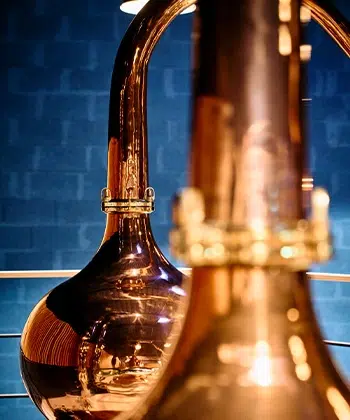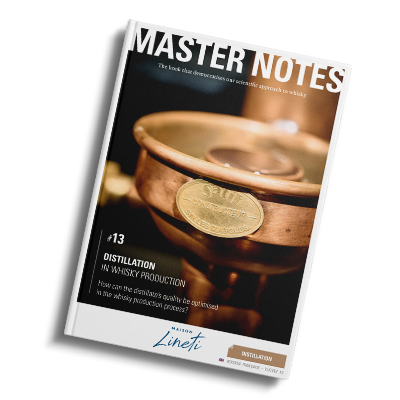The notion of reflux
The reflux is the word used to describe the amount of vapour that condenses and returns to the pot. During distillation, refluxes are created in the head. This is what we call the rectification phase: the volatile substances entrained by the alcohol are sorted, purified and concentrated. The sulphur compounds are for their part neutralised by the copper walls of the still. The reflux rate must be monitored by the distiller, to avoid impurities entering the low wines which could later compromise the quality of the middle cut, and then the whisky. Furthermore, the intensity of the reflux impacts the nature of the aromatic compounds present in the condensate.
In simple terms, the higher the reflux, the more the condensate will be loaded with volatile aromatic compounds, resulting in a lighter distillate. In contrast, if the reflux is low, the condensate will be loaded with heavy molecules, resulting in a more full-bodied distillate.






